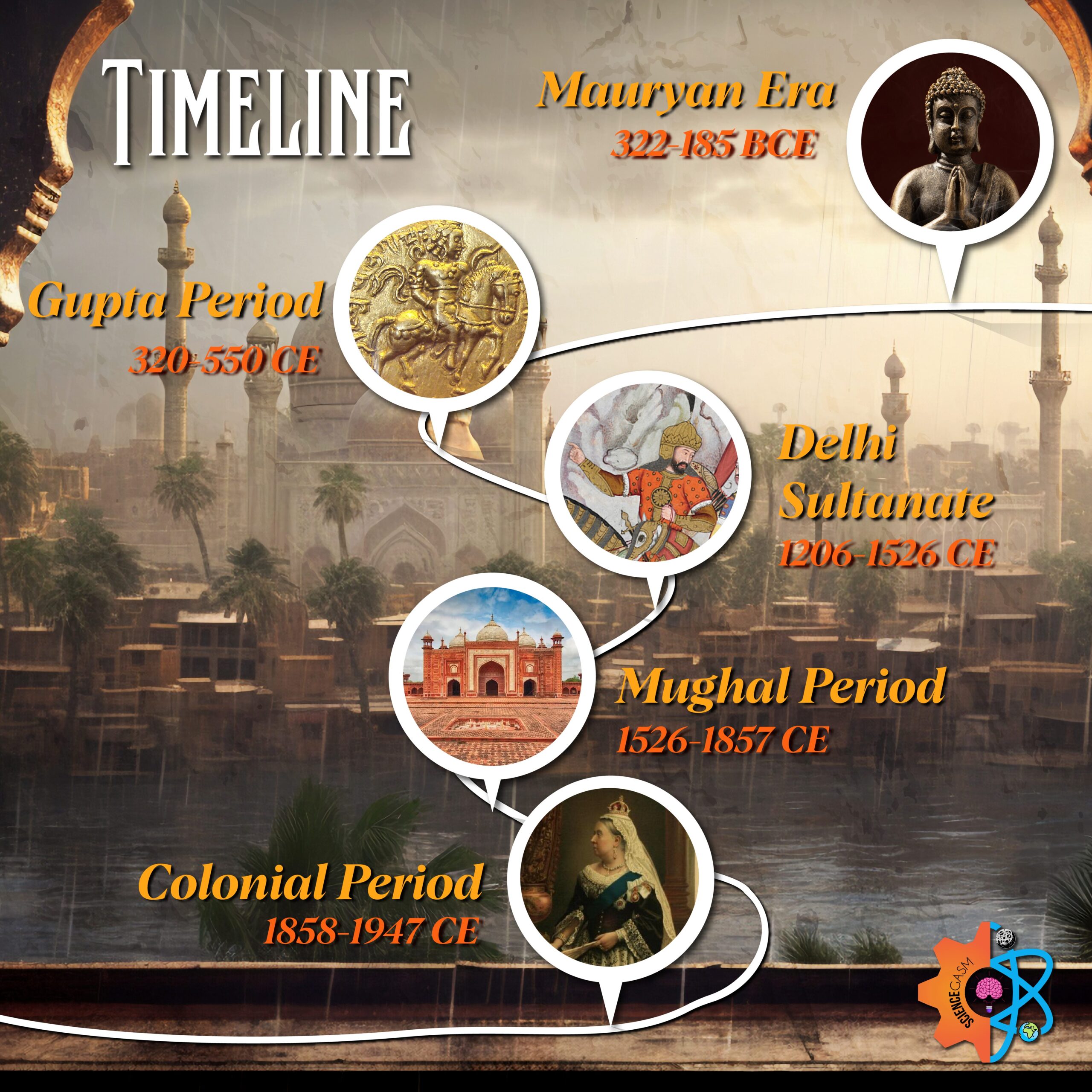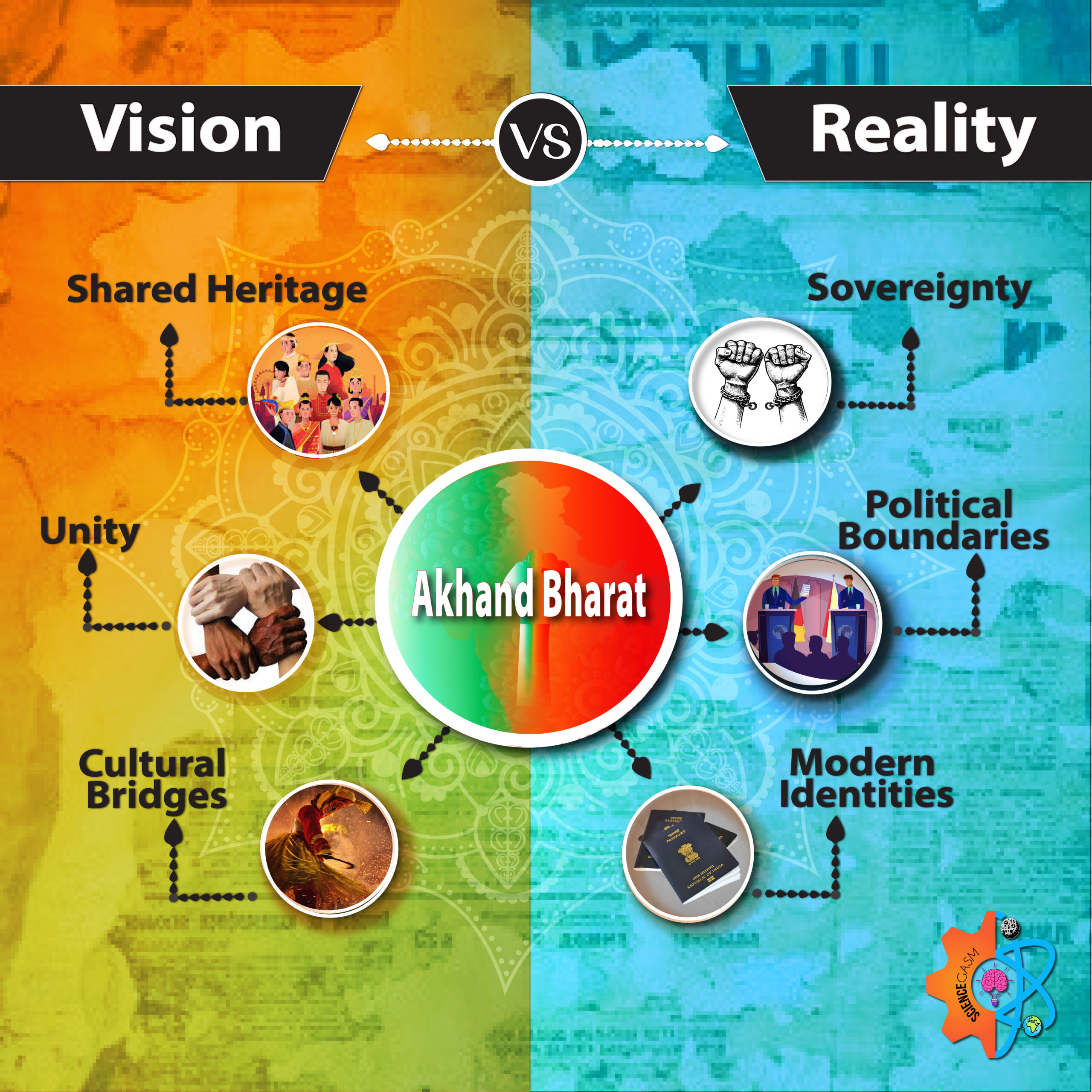History is not always about legends, dates, and borders. Sometimes it gives a glimpse of untold stories, cultures, people, languages, and love we see around us today. The Indian subcontinent is one of the few places that perfectly embodies a rich history. This is the land where culture and heritage unite, giving rise to some of the major geopolitical implications. Akhand Bharat is a concept of an “Undivided India” that still sparks debate and curiosity. The idea of Akhand Bharat is deeply rooted in the ancient history of the Indian subcontinent. Let’s travel back and unravel the true meaning behind this concept.

Akhand Bharat – What Does It Even Mean?
Akhand Bharat is not just some fancy term; it also has important historical relevance. According to this concept, countries that are very much independent today, like India, Pakistan, Bangladesh, Sri Lanka, Afghanistan, Nepal, Bhutan, and Myanmar, belong to the same cultural spheres. It is not entirely wrong to say that through this idea, India is trying to regain its control over the extended territories that were once part of the Indian Subcontinent. This takes us back to the time when powerful empires like the Mughal Empire, the Maurya Empire, and the British Raj in India connected the whole Indian Subcontinent as a single entity. Trade routes not only carried silk and spices, but they also moved ideas, languages, and cultures. Think of Akhand Bharat as a giant group project, where everyone brings their own ideas to the table that would sometimes lead to arguments, but deep down, everyone is connected.

Empire and Trade – Ties That Bound
Before falling victim to the intricacies of geographical borders, people were free to share their ideas, cultures, and heritage across the region. Empires and Civilizations rose and ended, but one thing that never changed was the connection.
Mauryan Era (322-185 BCE)
The Mauryan Empire is one of the biggest to exist in world history. It was governed by Ashoka the Great. During his reign, Buddhist teachings were spread across Asia through scholars, monks, and merchants. The Ashoka Akhand Bharat map stretches from modern-day Afghanistan in the west to Bangladesh in the east.
Gupta Period (320-550 CE)
The Gupta period, also known as ‘The Golden Age’, was an era full of astronomical, literary, and mathematical advancements. This period saw the flourishing of art and culture.
Delhi Sultanate and Mughal Period
After a few centuries, Sultans and emperors took over the subcontinent. Under their rule, the subcontinent produced some of the finest pieces of architecture, music, and poetry. Even Biryani was a product of this era. The blend of Persian, Central Asian, and Indian influences shifted the narrative from power to cultural fusion.
Colonial Period
Under British rule, all the major territories of the Indian Subcontinent were interlinked, sharing infrastructure and trade networks. Though colonialism brought exploitation, it also strengthened the web of connections between the people of this region.

Where Culture and Faith Unite
It’s fascinating to know that the Indian subcontinent was a hub of diverse communities that coexisted with such peace and harmony, influencing one another.
Languages
People coming from different cultures spoke different languages. Some of the most spoken languages were Hindi, Bengali, Urdu, and Punjabi. Each of them contributed to the literature, often blending the phrases from one another. This resulted in such linguistic diversity that it helped in bridging the gaps between communities.
Religions
It’s hard to believe, but there was a time when religions like Hinduism, Islam, Buddhism, and Christianity used to thrive alongside each other. This gave rise to traditions where beliefs and rituals intertwined, erasing the boundaries and bringing people closer.
Festivals
Whether it was Holi, Eid, Diwali, or Christmas, one’s festival was everyone’s to celebrate. Irrespective of religious differences, people used to join in and celebrate each other’s festivals as one of their own.

How Partition Reshaped the History
For centuries, communities lived together in the subcontinent with harmony, sharing languages, festivals, and traditions. Then came the British rule, under which the religious and political differences grew stronger. The partition of India in 1947 was one of the biggest migrations in human history. British India was divided into two major states, India and Pakistan, and later Bangladesh emerged in 1971. Families were torn apart, homes were destroyed, nearly 15 million people were displaced, and communities were divided by faith and political boundaries. This was the turning point that not only reshaped the identity of the Indian subcontinent but also fueled the drive of Indians to bring the idea of Akhand Bharat into reality.
Why We Still Talk About Akhand Bharat Today?
Even today, the term Akhand Bharat continues to be a part of our daily discussions. Although for most people it’s just a historical concept, many take it as an ideological vision that reflects the views on unity and sovereignty. The truth is, while the modern-day nations like India, Pakistan, and Bangladesh are separated by their geographical borders, their shared history and cultural influence tie them together. The idea of Akhand Bharat is not just about ancient maps; it’s about bringing the nations together as a unified state. On May 28th, 2023, at the Parliament House in New Delhi, instead of showcasing the map of India, a new mural of Akhand Bharat was displayed. To our surprise, instead of celebrating the idea, as one would expect, it caused a massive outrage from the political establishments of Bangladesh, Pakistan, and Nepal.
Can Akhand Bharat Ever Come to Reality?
India, Pakistan, Bangladesh, Sri Lanka, Afghanistan, Nepal, Bhutan, and Myanmar are now independent and sovereign states. They have their own national and political identity. After all these years, reuniting them into a single entity is not only questionable but also impossible on so many levels. Each country gained its independence after a long struggle. The idea of losing control to a Hindu majority administration is unacceptable to all. Moreover, the current ruling party of India, the Bharatiya Janata Party (BJP), the one promoting Akhand Bharat, is heavily influenced by the Hindutva Ideology, which is deeply rooted in the idea of Hindu nationalism. This threatens the territorial integrity of the concerned countries, which are now holding the Indian establishment accountable for this move.

Shared Past, Different Future
The concept of Akhand Bharat is more than just an ancient map. It is a reminder that before the borders, there were tales of our shared history, culture, and faith. Akhand Bharat is just a historical idea and can never be brought to life. Embracing history doesn’t mean adopting it as your future. Nations have evolved, and there’s no way they are going to give up their hard-earned independence. We need to understand that erasing borders is not a road toward everlasting peace. Instead, it’s going to cause a massive political riot. History is not supposed to design our future, but influence it. Akhand Bharat is a hope that manifests a future where countries stand united not by land, but by mutual respect for ideas, heritage, and beliefs. Check out this article we did on Why ‘India’ Is the Wrong Name for the Country!


Leave a Reply